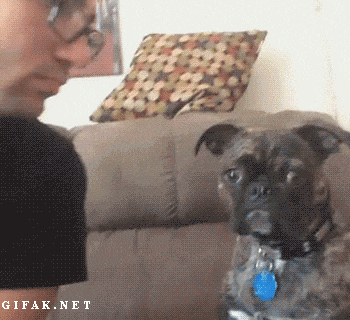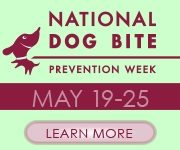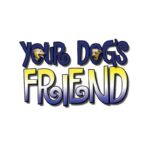It’s Only Funny Until Your Dog Runs Out of Spoons
We’ve all seen the funny videos and animated GIFs on the internet of dogs doing crazy things (or crazy things happening around dogs). Dogs and children. Dogs and adults. Dogs and cats. Dogs and the vacuum cleaner.
We pass these “funny” or “adorable” pictures and videos to our Facebook friends and pin them to our boards on Pinterest.
…but I’m here to encourage you to stop.
It has to do with spoons. Did you know your dog has spoons? He does, and it’s a very bad thing if he runs out of them.
The Spoon Theory
If you know anyone who lives with a chronic illness (physical or mental), you are likely familiar with Spoon Theory. If not, here is the article that you’ll want to read in your spare time. It is excellent and will help you be a more compassionate friend.
The gist of Spoon Theory is this:
Each morning, a person with a chronic illness wakes up with a certain number of “spoons.” These spoons represent the number of activities or interactions that they can handle in a given day. Once they run out of spoons, they need time to relax and recharge. If they don’t, it could result in a physical or mental crisis (or a really bad day tomorrow). Depending on the day, they may have more spoons (feelin’ good!) or less (bad pain day).
Got it? Let’s move on!
Human Spoons vs. Dog Spoons
As a human, you choose how you spend your spoons. If you know you’ll need energy for a presentation to your boss at 3 pm, you’ll likely skip going out to lunch with your colleagues at noon. If your arthritis is bothering you, you can avoid doing tasks that are particularly painful. If you’re feeling emotionally overwhelmed or in physical pain, you can choose to take a day off work and relax in front of cheesy daytime TV.
Dogs don’t get to choose how they spend their spoons. We do. Every day, we make decisions for our dogs. We decide which path our morning walk will take. We decide whether we want them to “meet” that new dog in the neighborhood. We decide whether the little girl next door can come over and play fetch. We decide to hug and kiss them. We decide to let the toddler use the dog for a pillow, or worse yet, a horse.
How Many Spoons Does a Dog Have?
A well-socialized, happy dog may appear to have unlimited spoons. A fearful or reactive dog may start out with only a few. My fearful dog, Titania, has greatly increased her spoon collection, thanks to classes at Your Dog’s Friend and the advice of Debbie Jacobs of FearfulDogs.com. Thanks to counter-conditioning and confidence building exercises, she enjoys a lot more of life than she did just two years ago.
An Example of a Dog Losing Spoons
We remove a spoon from our dog’s collection every time we expose them to a situation that makes them uncomfortable.
This was posted to a friend’s Facebook wall:

Let’s count the stress signals this dog is showing:
- Stiff body
- Ears pinned back
- Whale eyes (wide eyes with lots of white showing)
- Leaning away
In short, in the few seconds of this animated GIF, this dog is shedding spoons left and right.
What would happen if the dog was already having a bad day? Let’s say that a meeting on his morning walk resulted in getting snapped at by an unfamiliar dog. There’s construction going on next door and there are lots of loud noises and strangers in hard hats. And unbeknownst to his human, this dog ate something in the backyard and now his tummy is feeling upset.
Now what happens when the man tries his parlor trick?
The Bite That Came “Out of Nowhere”
Dog bites never come out of nowhere. The man in the image above probably does this “trick” to entertain his friends all the time and has never been bitten. But if his dog was having that bad day described above and had run out of spoons… well, that man could end up with a bite to the face. And it would have been 100% his fault, not the dog’s.
Conserving Your Dog’s Spoons
A dog with plenty of spoons is a happy dog!
As a dog parent, it’s your job to recognize the stress signals in your dog and keep them away from situations (or people) that cause them anxiety. For your dog, this may mean scheduling your daily walk for a time when fewer bicyclists are on the trail, or leaving your dog home instead of taking them to the pet store with you. It could mean giving your dog “me time” when they can relax in their crate with a bully stick and not be interrupted by your children.
Most importantly, it means being present with your dog and knowing when to remove them from a situation. A dog isn’t able to say, “Hey, I’ve got one spoon left and if this kid pulls my ear one more time, I’m done!!” You are your dog’s spoon-monitoring superhero, and they love you for it.
Want to Learn More?
We host free workshops on various topics throughout the year, including several on fear, reactivity, and other behavior issues.
For now, we recommend this article on Dogster entitled: How are Dog Bites Like Tetris?
If you have a fearful dog, we highly recommend reading and watching anything by Debbie Jacobs of FearfulDogs.com.
As always, if you have questions, we’re happy to help. Contact us anytime.







 This week, May 19 – 25, is National Dog Bite Prevention Week. Dog bites change the lives of the people and dogs involved and many dog bites can be prevented through education.
This week, May 19 – 25, is National Dog Bite Prevention Week. Dog bites change the lives of the people and dogs involved and many dog bites can be prevented through education.

